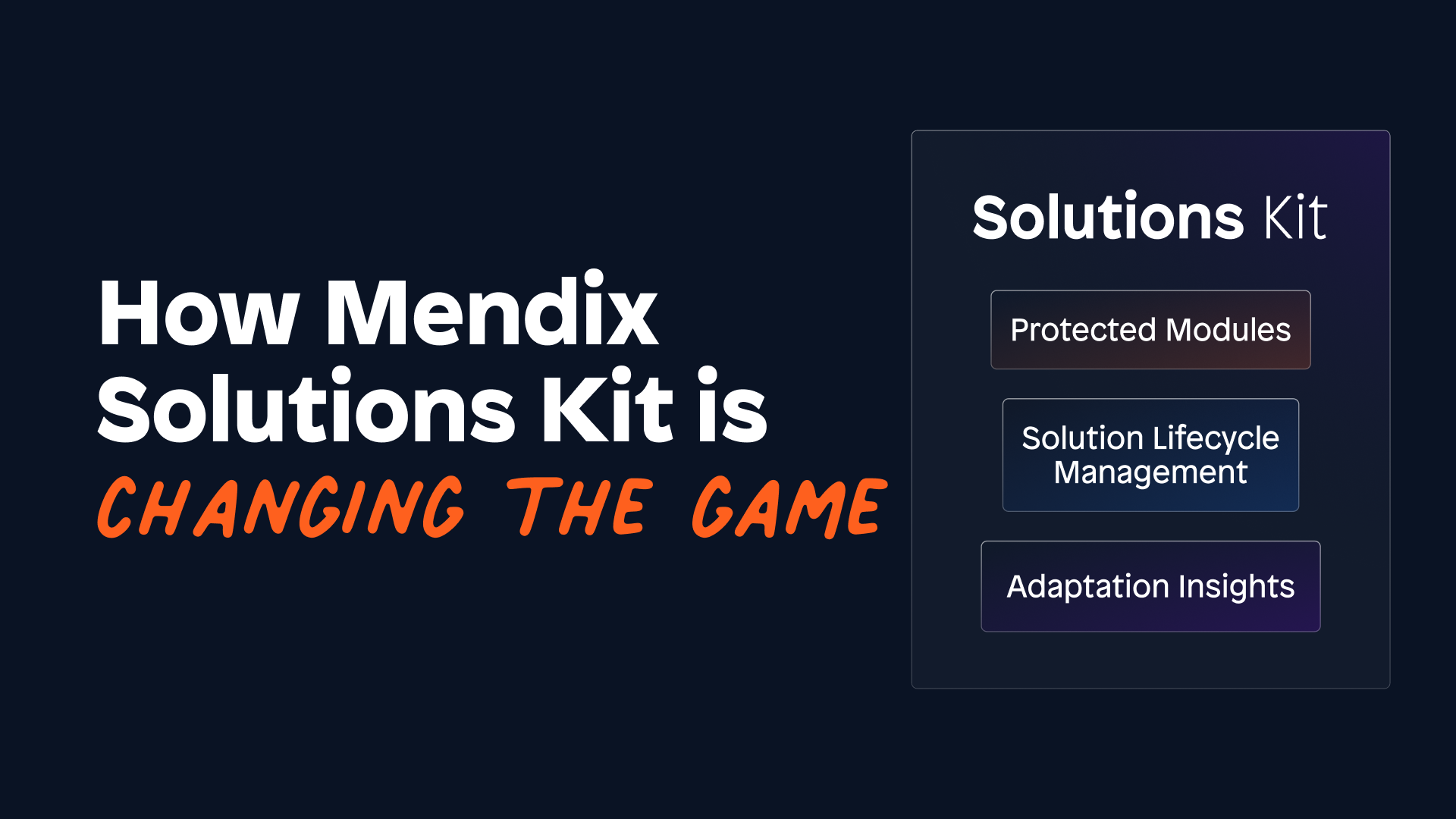The Lies of COTS and the Rise of ISVs

In 2022, my colleague, Sheryl Koenigsberg, wrote about what it now means to be digitally mature.
To sum it up: modern digital transformation means evolving beyond the walls of your organization.
You need to create an ecosystem of adaptable applications that help your customers, suppliers, and partners change the way they do business. In the process, you’re able to create new streams of revenue for yourself.
So what’s the next phase of digital maturity? Giving your organization the ability to become an independent software vendor. There are two things you need to do to achieve this.
- Understand that commercial off-the-shelf (COTS) software is a lie
- Start leveraging Mendix’s low-code development platform and the Mendix Solution Kit
The false promise of COTS
Organizations often turn to COTS software because it’s ready-made and the costs are more predictable than building a custom solution in-house. The idea is that a COTS product can fit in any organization and solve the problem. It’s right “off the shelf,” no adjustments needed.
We all know this is a lie though.
Software is everywhere. Off-the-shelf solutions are not going away because they still serve very general use cases.
It’s rare, though, that the issue you’re trying to solve is a general use case. Your problems, employees, and tech stack are all unique. That’s why in my career, I’ve seen plenty of clients dealing with the impact of trying to implement an off-the-shelf solution. A lot of sunk costs go into trying to customize and integrate these solutions.
Organizations are realizing that off-the-shelf solutions positioned as one-size-fits-all are tantamount to fairy dust.
If organizations once turned to COTS because they were less expensive than custom development, the pendulum is starting to swing back the other way. This explains the growth of low-code, which is experiencing a market jump of 20% since 2022.
Custom development with low-code vs COTS
Organizations like the ones you see in Mendix’s ISV partner ecosystem are using low-code to create highly adaptable out-of-the-box software that actually fits others’ needs.
If that sounds like I’m selling you a similar bill of goods to COTS, I’d say that’s wise of you to think like that.
There are differences, however, that show why low-code ISV solutions are a lot more viable and valuable than COTS.
- Low-code solutions are adaptable. While the ISV maintains the core solution, you’re able to adapt and customize to fit your organization’s needs. With low-code’s visual nature, you can do this more easily than traditional development.
- Custom low-code solutions are less costly. COTS solutions can generally be very pricey, especially when you need to purchase add-ons and extensions. But let’s say a low-code ISV solution is the same price as an off-the-shelf solution. You still save resources when it comes to integrating and adapting a low-code solution because of its mutability.
ISV solutions built with low-code offer what COTS solutions promise but can never fulfill.
Low-code also pushes open the door of opportunities wider than COTS ever could.
Become an ISV Partner with Mendix
COTS drawbacks affect the way your business operates internally. It’s also most likely happening with
- your customers
- your partners
- your suppliers
- your distributors
- anyone else in your organization’s ecosystem
You could adopt an adaptable, low-code solution. But you could also create an adaptable application on your own that solves your needs and help others address their similar needs.
As an example, Washington Federal Bank (now known as WaFd Bank) was on the lookout for online banking portals that fit their specific needs. They spent 8 months trying an off-the-shelf solution. After, they realized the solution wasn’t flexible enough and didn’t meet their customization needs. Building the portal in-house with traditional development methods was out of the question. That took too much development time and maintenance resources.
WaFd found the perfect middle ground: Building their own solution with low-code.
In 10 months, WaFd built its own custom banking portal with Mendix. Moreover, it built it in such a way that made it adaptable. So they built a similar solution for the back-office team. Turns out, this solution solved a need most banks go through in trying to visualize customer data.
“When we realized the problem we were solving for WaFd was pretty universal, it was evident that there was an opportunity to spin it off and help other banks and credit unions benefit from the same technology.” That’s Dustin Hubbard, who served as WaFd’s CTO for three years.
Dustin is now the President of Archway, a company spun off from WaFd and now an ISV, selling the customer and back-office portals to help other businesses in their industry solve the same problem they did. The difference is that customers can add their own logic and change UX that fit their business’s guidelines.
The Mendix Platform promotes modularity through reusable components. This makes it easy for companies like Archway to white label their solution and de-couple it from their architecture.
A white-labeled solution gives Archway’s customers an application that mostly fits their needs, while leaving room for adaptation to make it fit-for-purpose. The ISV maintains the core application, while the customers can customize to their needs.
With Mendix’s low-code development platform, that customization is much easier than it would be with traditional programming.
The Mendix Solution Kit allows ISVs to create an adaptable solution while protecting IP and lock down certain functionalities, yet allowing for reuse and extension. The kit lets ISVs view all instances of their adapted applications, seeing where customers have modified and extended their applications.

ISVs can roll out updates and upgrades that won’t break their customers’ instances and modifications.
Digital ecosystem is the new business model
Marc Andreeson famously said that “software is eating the world.” I think about this remark a lot. Andreeson’s notion that software companies will disrupt traditional companies is true. You should be digitalizing your organization before your market chews you up.
Sure, with a commercial pre-built solution, a bunch of integrations, customizations, headaches, and resources later, you can avoid being eaten.
But why stop there?
Why not go to that next stage of digital maturity and take a bite for yourself, too?
Getting to that next phase sets your organization up well for the future. Companies like WaFd’s Archway are just the start. Combine your niche experience and low-code to create a digital ecosystem that will benefit you, your customers, partners, suppliers, and everyone else that may have fallen the COTS lie.
When you stop relying on other vendors’ inflexible off-the-shelf solutions and start leveraging more adaptable, mutable ISV products, that’s when you start to enter that next phase of digital maturity.
